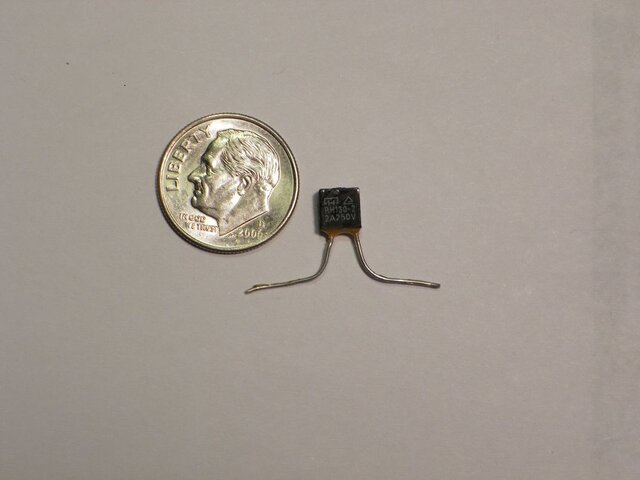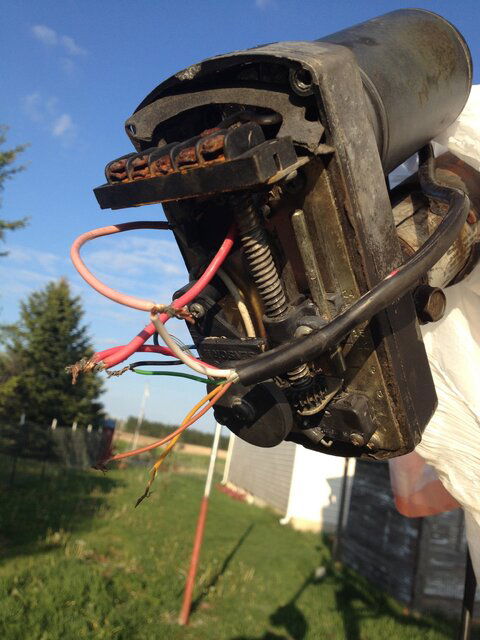I tried moving my dish from 107W to 121W and the actuator went way too far west and I started getting the Er2 message. I got a new actuator (I think it's a Venture). When I installed it I keep getting the Er2 message on my vbox7. I tried hooking up the battery charger to the actuator and its running strong. Replaced the sensor and still Er2. I tried the Vbox on a Uniden actuator I know works and still Er2. Any suggestions?
Vbox Problem
- Thread starter StarScan
- Start date
- Latest activity Latest activity:
- Replies 26
- Views 4K
You are using an out of date browser. It may not display this or other websites correctly.
You should upgrade or use an alternative browser.
You should upgrade or use an alternative browser.
- Status
- Please reply by conversation.
It is not detecting the pulses from the actuator. Double check your connections, also make sure you have the same color wire on both ends. If it still does it, it may be an internal open in the vbox.
What series of Vbox has a replaceable fuse?? My Vbox X doesn't have one like that but instead has one embedded in the transformer coil that has to be soldered in.
That would be the one made by DMSI the VBox 7. The VBox X is made by PowerMax. The first time I overloaded the VBox X the little built-in circuit breaker did not reset and I ended up digging it out of the transformer and installing a fuse holder and a 2A fast blow fuse in the unit instead. Still working goodWhat series of Vbox has a replaceable fuse?? My Vbox X doesn't have one like that but instead has one embedded in the transformer coil that has to be soldered in.
While the VBox 7 and the VBox X do basically the same thing, they are very different pieces of hardware and operate way differently. My preference is the VBox X.
While the VBox 7 and the VBox X do basically the same thing, they are very different pieces of hardware and operate way differently. My preference is the VBox X.
Yeah, I've got both but prefer the X also. I was looking for an X and couldn't find one so I bought a 7 instead. Used that for a short time until I could find another X and then bought that so the 7 is a backup piece. It's not a major difference in the two, just enough small things that I prefer the X.
Ditto on replacing the Vbox X fuse in the transformer with a replaceable one as I did the same thing on one I was having problems with last year. I just wasn't aware that the 7 already had those installed from the factory.
I only have a Vbox7 from DMS International with the fuse on the circuit board. If the Vbox X has the fuse mounted in/on the transformer I would be very wary of replacing it
with an external one. Highly likely it is a thermal fuse, designed to blow in case of transformer overheating to prevent a fire. Insurance won't cover damages if the original safety design has been altered/defeated and the worst happens. Know it can be annoying to replace/repair but just saying....
Know it can be annoying to replace/repair but just saying.... 
with an external one. Highly likely it is a thermal fuse, designed to blow in case of transformer overheating to prevent a fire. Insurance won't cover damages if the original safety design has been altered/defeated and the worst happens.
 Know it can be annoying to replace/repair but just saying....
Know it can be annoying to replace/repair but just saying.... It's not a fuse actually. It's a self resetting circuit breaker. The one I had never reset after blowing. the "self resetting circuit protection" is one of the features they advertise on the unit.I only have a Vbox7 from DMS International with the fuse on the circuit board. If the Vbox X has the fuse mounted in/on the transformer I would be very wary of replacing it
with an external one. Highly likely it is a thermal fuse, designed to blow in case of transformer overheating to prevent a fire. Insurance won't cover damages if the original safety design has been altered/defeated and the worst happens. View attachment 97342 Know it can be annoying to replace/repair but just saying....

Last edited:
It's not a fuse actually. It's a self resetting circuit breaker. The one I had never reset after blowing. the "self resetting circuit protection" is one of the features they advertise on the unit.
View attachment 97343
The RH130-2 is most likely a TCO (Thermal Cut Off) fuse built into the transformer in the event of overheating (in your case 130°C /266°F). They open internally when a specified temperature is reached and generally don't reset. The "self resetting circuit protection" could be provided by one or more PTC resettable fuses (polyswitch) on the circuit board. PTC fuses open the circuit under an overload condition and then return to a conductive state after the overload is removed, acting like a circuit breaker. Through the board PTC's look a lot like a ceramic disc capacitor and can be round, square or rectangular. They also come as surface mount devices. Examples:



As i said, I have the Vbox 7 so I don't know what components are on the Vbox X circuit board. Not being critical, just trying to help avoid a bigger problem down the line...
Last edited:
You're right! I stand corrected  Since I saw where/how they placed this thermal fuse, I now have no doubt there would be issues. All the same fuses I saw had the temp rating on them. This one only shows it through the part number. The Volt Amp numbers had me thinking current protection device. Since they advertised self resetting protection I Ass u me d
Since I saw where/how they placed this thermal fuse, I now have no doubt there would be issues. All the same fuses I saw had the temp rating on them. This one only shows it through the part number. The Volt Amp numbers had me thinking current protection device. Since they advertised self resetting protection I Ass u me d 
Got back from rat shack with some new fuses. I tried the vbox on a actuator that works and it worked fine. I tried it on my new (new to me) actuator and I only got two counts and the fuse popped. I hooked it up directly to the motor when I tried it. What should I try next?
Sounds like the Venture actuator is drawing too much current. Is the actuator binding? If the actuator is rusted/damaged or the motor is failing, it could be drawing much more than if it were working properly. If you have a amp meter check the current draw. Check that the tube and/or gears are not corroded and well greased.
The motor looks kind of rough but it runs smoothly with no binds and its well lubricated. When hooked up to the battery charger it runs fine. I need to get a back cover for it. I've been using a trash bag with holes in the bottom for drainage.
Attachments
Yikes! Looking at the pictures you have this wired incorrectly. You have one of the sensor wires twisted together with the motor wires. Those two circuits are separate. That may have killed that sensor. Ok I looked a little close and the shield is being used for a conductor on the sensor.
Last edited:
Current draw should be well under an amp if not moving a dish ' off the bottom'. Got an ammeter in the battery charger?? If not, use an inline fuse. Start with a 5 amp, if it don't blow, try a smaller value one. When you hit the one that blows, you can deduce the current draw. But here again, the amp draw will be increased because of low voltage*. More accurate if you use a 24 to 36 volt source.
*Electric DC motors like to keep 'power' generated constant. P=E×I
Reason most new vehicles no longer use a series resistance in the heater fan motor. Most are PWM power supplies to them today.
*Electric DC motors like to keep 'power' generated constant. P=E×I
Reason most new vehicles no longer use a series resistance in the heater fan motor. Most are PWM power supplies to them today.
My battery charger has an amp meter but its not very detailed. Will car fuses work for inline? Ill see what I can find.
- Status
- Please reply by conversation.
Similar threads
- Replies
- 9
- Views
- 2K
- Replies
- 2
- Views
- 1K
- Replies
- 12
- Views
- 3K
Users Who Are Viewing This Thread (Total: 0, Members: 0, Guests: 0)
Who Read This Thread (Total Members: 1)
Latest posts
-
-
-
Internet's Single Point of Failure? Let's Encrypt Risk! #shorts
- Latest: one_db_compression
-
-




